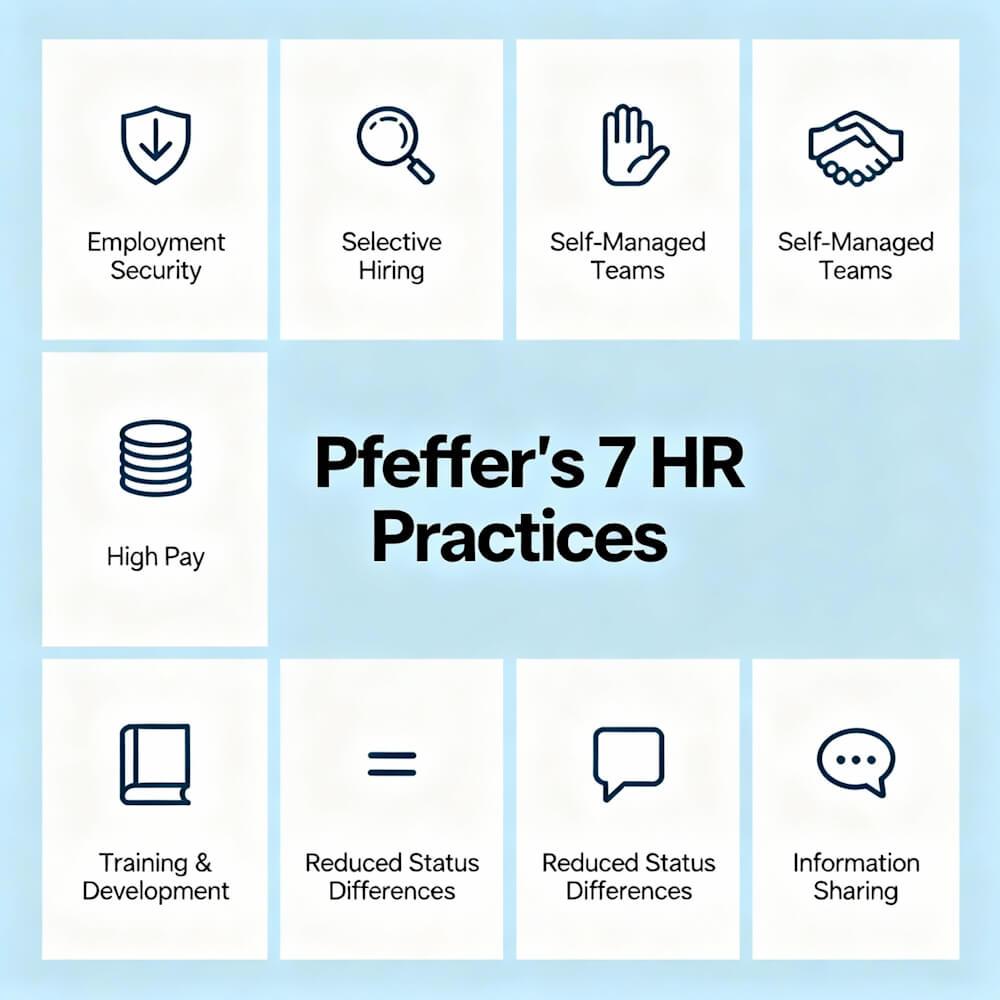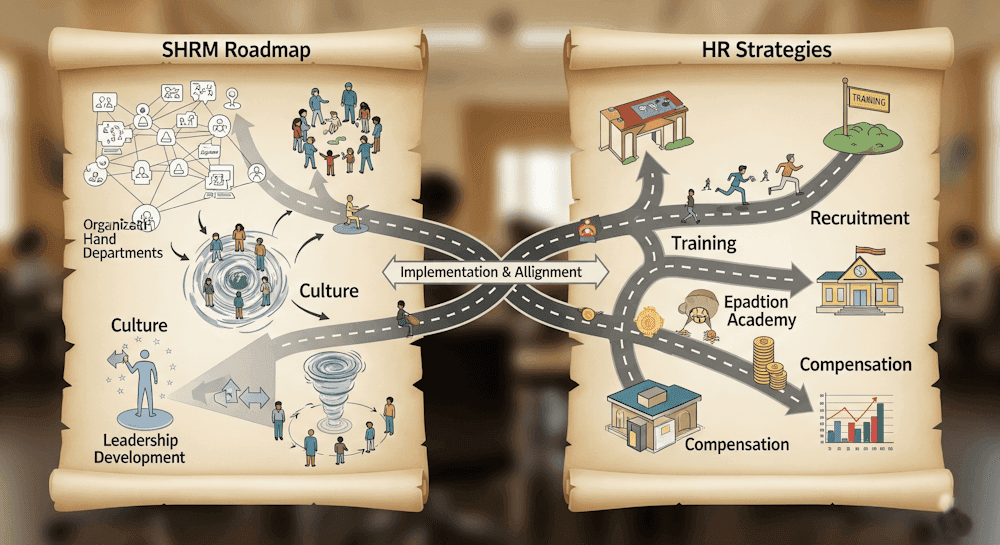Best Practices According to Pfeffer (1994)
The goal of optimal HRM practice is to foster commitment and motivation, which will result in improved economic performance and employee development, giving the company a competitive advantage (Hutchinson, Kinnie, Purcell, Rayton, & Swart, 2009). Pfeffer (1998) identified seven dimensions of best practice HRM: job security and internal labor markets; selective hiring and sophisticated selection techniques; extensive training, learning, and development; employee involvement, information sharing, and voice; self-managed teams/team working; high compensation contingent on performance; and reduced status differentials/harmonization.
1. Assurance of Employment
The other six HRM practices support employment security, which is the first of Pfeffer's seven pillars of HRM best practice. Pfeffer (1998) logically argues that requiring employee commitment to the organization would be unreasonable if the organization could not provide some sort of continued work security in return. This reciprocal structure promotes mutuality between the organization and its employees and is likely to help to the formation of a positive psychological contract between the two parties, fostering an open and trustworthy working relationship (Marchington & Wilkinson, 2005).
2. Selection and Recruitment
'Capturing a store of great human potential' (Boxall, 1996, pp. 66–67) is seen as a viable strategy for gaining a competitive edge (Marchington & Wilkinson, 2005).
As a result, Pfeffer's second functional HRM area is excellence in employee recruitment and selection (1998). While the use of appropriate and effective recruiting and selection strategies is not a novel concept in many ways, Pfeffer believes that more attention to this process, as well as the use of more complex techniques, is essential.
3. Development and Training
Employers must ensure that outstanding potential is adequately harnessed and utilised after significant effort has been put in acquiring great talent into the organization. This necessitates training and development in order for the person to stay on top of their game. As a result, a long-term approach to training, learning, and growth is equally necessary. Employees can not only maintain competency in their employment, but they can also stay current on advancements in their industry that may effect their future employability (Browning & Edgar, 2004).
4. Communication
The fourth dimension outlined by Pfeffer is employee involvement, knowledge exchange, and voice (1998). Within the workplace, open, two-way communication should be promoted. This has a lot of advantages. For starters, it guarantees that personnel are kept up to date on financial, strategic, and operational issues. Second, it sends out both symbolic and substantive messages about fairness and trust. Third, it promotes employee participation. As a result, good communication can raise employee understanding of organizational goals and encourage greater commitment to achieving strategic objectives.
5. Working as a Group
Self-managed teams and teamwork as the dominant style of work structure are the sixth component considered vital to organizational success. Working as part of a group supports better decision-making and the development of innovative solutions to issues (Pfeffer, 1998). There is evidence that this type of work organization is becoming increasingly popular in the service industry (Gilbert & Guerrier, 1997).
6. Compensation
A pay strategy, which sees employees paid high salary based on their performance, is the sixth dimension on Pfeffer's list of best practices. Profit sharing, equity ownership, merit pay, or various forms of individual or team performance systems such as incentives or bonuses are all examples of this type of strategy in operation. This method is justified in two ways: first, it sends a message to employees that their superior contribution to organizational goals is valued, and second, it is consistent with a smart recruitment and selection strategy that aims to attract and retain high-quality individuals.
7. Harmonization
Harmonization and the decrease of status differentials within the organization are the seventh and final dimensions. Harmonization can be achieved by introducing uniform terms and conditions of employment throughout the whole workforce (such as holiday entitlements, sick-pay systems, pensions, and working hours). The reduction of obstacles between diverse groups in the workplace promotes and supports a team-oriented culture. Language, labelling, physical space, and dress (Pfeffer, 1998) are examples of organizational symbols that provide messages to employees about their worth.






